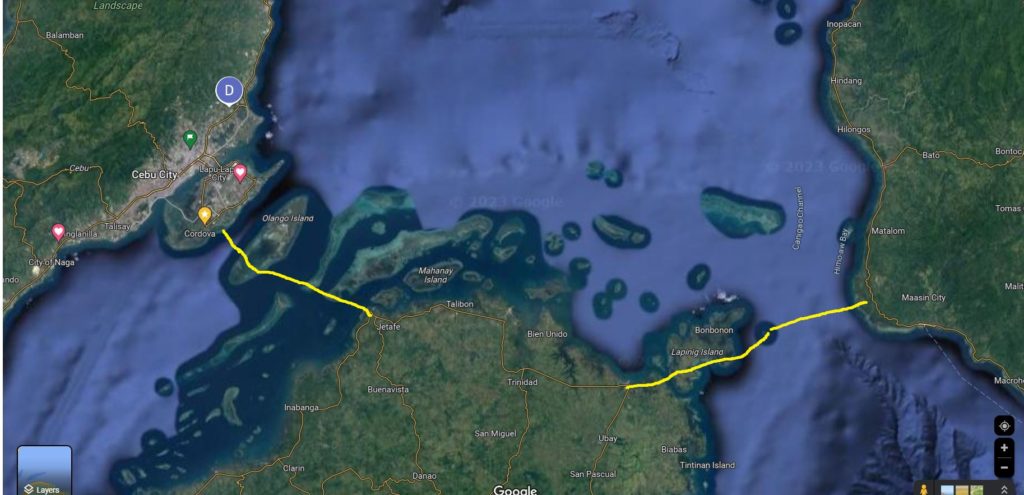The proposed Cebu-Bohol-Leyte Bridge project is a monumental infrastructure undertaking that aims to connect the vibrant islands of Cebu, Bohol, and Leyte in the Philippines.

The Cebu-Bohol-Leyte Bridge project seeks to strengthen the connections between Cebu, Bohol, and Leyte, three islands rich in natural beauty, cultural heritage, and economic potential. By bridging the physical gap between these islands, the project aims to facilitate smoother travel, boost trade and tourism, and promote regional integration.
Cebu Bohol link will connect the existing CCLEX Cordova Link Express to Bohol via Olango in Hilutungan then in Getafe Municipality.
Then the Bohol Leyte Bridge will pass thru the Lapinig Islands in Ubay and will connect to Maasin City. Then those Mindanao bound motorists can proceed to San Ricardo and cross to Surigao.
Boosting Economic Growth: The bridge project has the potential to spur economic growth in the region. With improved connectivity, the movement of goods, services, and people will be streamlined, enabling businesses to expand their reach and tap into new markets. This enhanced trade and commerce will create employment opportunities and contribute to the overall economic development of the three islands.
Enhanced Tourism Potential: The Cebu-Bohol-Leyte Bridge will unlock the tourism potential of the region, attracting domestic and international visitors who seek to explore the diverse attractions of Cebu, Bohol, and Leyte. Travelers will have the convenience of exploring multiple destinations within a single trip, including the historical sites of Cebu, the iconic Chocolate Hills of Bohol, and the pristine beaches of Leyte. This increased tourist influx will generate revenue for local businesses, create employment opportunities, and support the preservation of cultural and natural heritage sites.
Improved Connectivity and Accessibility: One of the key benefits of the Cebu-Bohol-Leyte Bridge project is the enhanced connectivity and accessibility it will provide. Currently, travel between these islands often involves multiple transportation modes and can be time-consuming. The bridge will streamline travel, reducing travel time and providing a more efficient and reliable means of transportation for residents, tourists, and the transportation of goods.
Challenges and Considerations: Undertaking a project of this magnitude comes with its own set of challenges. Engineering feats, including accounting for various environmental factors such as deep waters and seismic activity, will be critical in ensuring the bridge’s stability and safety. Additionally, the project must adhere to environmental regulations, conduct thorough impact assessments, and implement measures to minimize ecological disruption and protect marine life and ecosystems.
Preserving Cultural and Environmental Heritage: As the project progresses, it is essential to consider the preservation of the region’s cultural and environmental heritage. Close collaboration with local communities, indigenous groups, and environmental experts will be vital in mitigating any potential negative impacts on cultural sites, biodiversity, and marine ecosystems. The project should prioritize sustainable practices and ensure that it contributes to the long-term preservation of the region’s natural and cultural assets.
The proposed Cebu-Bohol-Leyte Bridge project holds immense potential for fostering closer connections, driving economic growth, and promoting regional integration. By linking the vibrant islands of Cebu, Bohol, and Leyte, the bridge will facilitate seamless travel, boost trade and tourism, and enhance overall accessibility. As the project moves forward, it is crucial to strike a balance between development and environmental preservation, ensuring that the bridge becomes a sustainable and enduring symbol of unity, progress, and prosperity for the region.
Leave a Reply